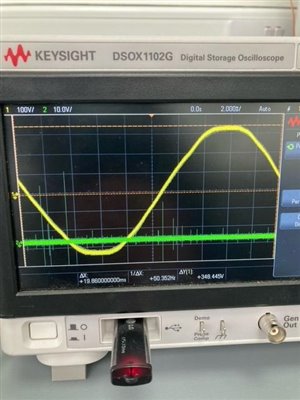

Kelly Marie Angel:
As a matter of interest what does the workshop do? Are there arc welders in use or heavy metal cutting machinery all of which could put something nasty on the mains
No, Nothing like that, not connected to this DB anyway and the issue is replicated by switching a 100W lamp on/off so I figured it could literally be anything if that's the case. I know thetre has been some process of elimination like water boilers being turned off, AC turned off etc but the problem still occurs.



davezawadi (David Stone):
Right Dave, what exactly is the fault with the HDMI to HDMI lead that has failed? Which pins are now not connected? The DVI.HDMI and VGA>something else are electronic so not much help, but a HDMI>HDMI is not if less than about 10 metres in length. You are claiming to have made one break, so what broke. Simple really. Spikes of this size are really not possible in the ways you are suggesting, unless something very unusual is wrong. If the other ring is different then you need to find out how, as you say it is to the same DB. There is something significant somewhere. This is not a simple EMC issue. You have not answered my questions either, how do the monitors "switch off", is it power, the PC or data?
I'm sorry David, got quite a lot going on and a fair few questions to respond to so i've done my best. Apologies if I missed one. HDMI to HDMI leads were apparently on 2 of the initial half a dozen PC's that had their leads swapped some weeks ago and had them sent to their IT dept to confirm they were broken and they then sent them replacements (not HDMI to HDMI) so unfortunately i've not seen them myself and like with a lot of other things, i'm relying on good information of what's been done over the past few months that this problem has existed prior to my involvement. The one that went this morning was a HDMI to DVI and that does have electronics inside.I also have a Display port to DVI in front of me that has also gone and will no doubt have electronics in it. My guess, based on what you're saying is the HDMI to HDMI is a red herring.
The monitors go black and then the image of whatever you had on your screen prior re-appears so it's not power as it would display the "Acer" start up image if that was the case. It must be the PC signal?
I'm simply sharing what i'm finding and trying to understand it! You say Spikes of this size are not possible unless something very unusual is wrong but I wouldn't be on here if it wasn't an unusual one! The Sparky that did the install was the first person they contacted and he couldn't make any sense of it either but i'm not sure how much time he gave it.
I didn't believe the readings I was seeing on the scope either and questioned if i'm missing something. I still might be! Especially with the phase shift which has baffled me. The fact is, it's been going on for months with several people getting involved and the leads are genuinely damaged and the monitors are still turning off so there's obviously something strange going on!
I can't understand why the lamp would cause the scope to show those spikes on one ring but not on the other? Like I say, it's all fairly new. I think the Board was put in late last year and the office was wired shortly after, by the same sparks, with a ring on one side and a ring on the other. Both the same. Breakers next to each other on the Board, labelled "office left" and "office right" and I have no reason to think there's anything hidden on the circuit after doing R1R2 and insulation resistance.
I'm running out of ideas..

AJJewsbury:
Is there anything unusual on the supply side - e.g. a UPS or power factor correction (e.g. the automatic type that switches capacitors in and out of circuit as the perceived PF changes) - that a even a slight change in a load might be nudging between states?
- Andy.
Hi,
There is a power factor correction unit that i've had a quick look at but in all honesty, a quick check on the display which read 1.0 as you'd expect, and that was about as far as my knowledge could take me with that particular bit of kit ?
One thing i'm looking at now, is what other items are on the same phase. The ring on the other side of the office is on L1 and the problem ring is on L2 along with most of the likely suspects that may or may not cause this type of issue. Things like plotters and printers for vinyl applications in a decals dept and lot's of aircon etc. I think the decals dept go home at 16:00 so i'm going to try and go through some process of elimination outside of the ring itself.
We're about to take you to the IET registration website. Don't worry though, you'll be sent straight back to the community after completing the registration.
Continue to the IET registration site